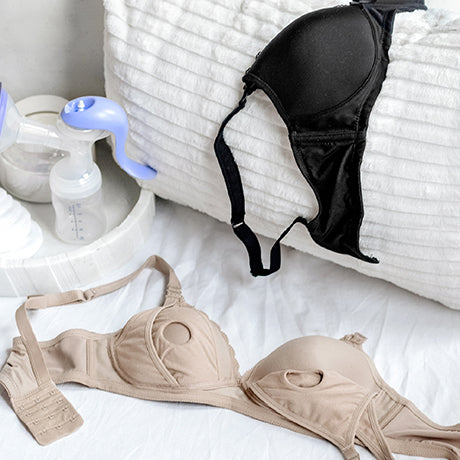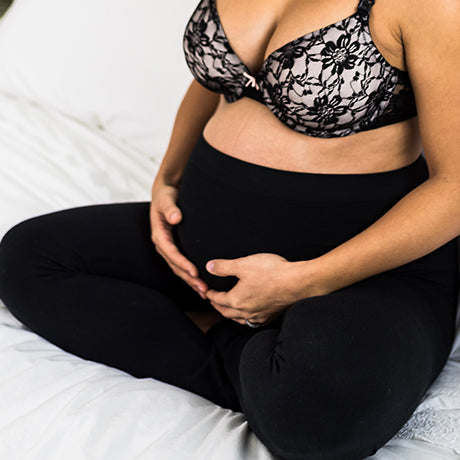Breastfeeding Support and “Baby-Friendly” Hospitals
 A report released earlier this month from the Centers for Disease Control indicates that more hospitals than ever are providing breastfeeding support for new mothers. Yet still, only 14% of approximately 4 million babies per year are born in “baby-friendly” hospitals. With the help of World Breastfeeding Week, National Breastfeeding month, governmental programs and support, countless breastfeeding advocacy groups and general breastfeeding awareness, improvements are being made in hospitals and beyond, but there is still much work to be done.
A report released earlier this month from the Centers for Disease Control indicates that more hospitals than ever are providing breastfeeding support for new mothers. Yet still, only 14% of approximately 4 million babies per year are born in “baby-friendly” hospitals. With the help of World Breastfeeding Week, National Breastfeeding month, governmental programs and support, countless breastfeeding advocacy groups and general breastfeeding awareness, improvements are being made in hospitals and beyond, but there is still much work to be done.
To be deemed “baby-friendly,” hospitals must meet the following 10 requirements:
- Have a written breastfeeding policy that is distributed to health care staff members.
- Ensure all health care professionals are skilled in implementing the hospital’s breastfeeding policy.
- Teach new mothers the benefits of breastfeeding.
- Encourage breastfeeding within the first hour after childbirth.
- Help mothers by offering breastfeeding demonstrations and hands-on support, or help mothers maintain lactation if they are separated from their newborns.
- Unless there is a medical need, allow mothers to exclusively breastfeed without supplemental intervention.
- Promote rooming-in where the mother and baby are rarely separated.
- Support breastfeeding when the baby shows signs of interest, readiness and hunger.
- Offer no bottles, artificial nipples or pacifiers to breastfed babies.
- Give mothers referrals for breastfeeding support from the hospital or elsewhere after discharge.
There are currently 289 hospitals covering 47 U.S. states that are considered “baby-friendly.” A list can be found on the Baby Friendly USA website. In all, 3,300 hospitals were reviewed as part of the “baby-friendly” report.
 The positive news is that major improvements have been made between 2007 and 2013, according to the CDC. While most hospitals still do not practice all 10 “baby-friendly” steps, many of them, 54%, implement most of these steps. That is up from 29% in 2007. National breastfeeding statistics show that 80% of babies begin life breastfeeding, which means hospitals and mothers are getting the message. But 60% of mothers terminate their breastfeeding experience before their original goal and only 22% of babies are still exclusively breastfed by six months of age. Twenty-nine percent of babies are breastfed through one year.
The positive news is that major improvements have been made between 2007 and 2013, according to the CDC. While most hospitals still do not practice all 10 “baby-friendly” steps, many of them, 54%, implement most of these steps. That is up from 29% in 2007. National breastfeeding statistics show that 80% of babies begin life breastfeeding, which means hospitals and mothers are getting the message. But 60% of mothers terminate their breastfeeding experience before their original goal and only 22% of babies are still exclusively breastfed by six months of age. Twenty-nine percent of babies are breastfed through one year.
The American Academy of Pediatrics recommends breastfeeding for at least one year of a baby’s life and the CDC promotes “baby-friendly” hospitals due to the numerous benefits of breastfeeding for babies. Breastfeeding lowers the risk of illnesses including ear and respiratory infections, diabetes, cancer and other major health concerns. Babies that are breastfed are less likely to die of SIDS and less likely to be obese later in life. Plus, breastfeeding is good for cognitive and emotional development, as well as developing a strong bond with mothers.
There are some barriers that prevent hospitals from being more supportive of breastfeeding. New policies take time, commitment and resources that hospital administrators find expensive and burdening. Formula feeding makes it easier for nurses to help mothers recover and rest after childbirth. Some even feel that being a “baby-friendly” hospital strips mothers of choices and shames them into breastfeeding when that would not otherwise be their preference.
On a global level, UNICEF and the World Health Organization support the “baby-friendly” hospital initiative and the CDC continues to promote it as well. The next “baby-friendly” report will be available in 2016.
The post Breastfeeding Support and “Baby-Friendly” Hospitals appeared first on Leading Lady.





